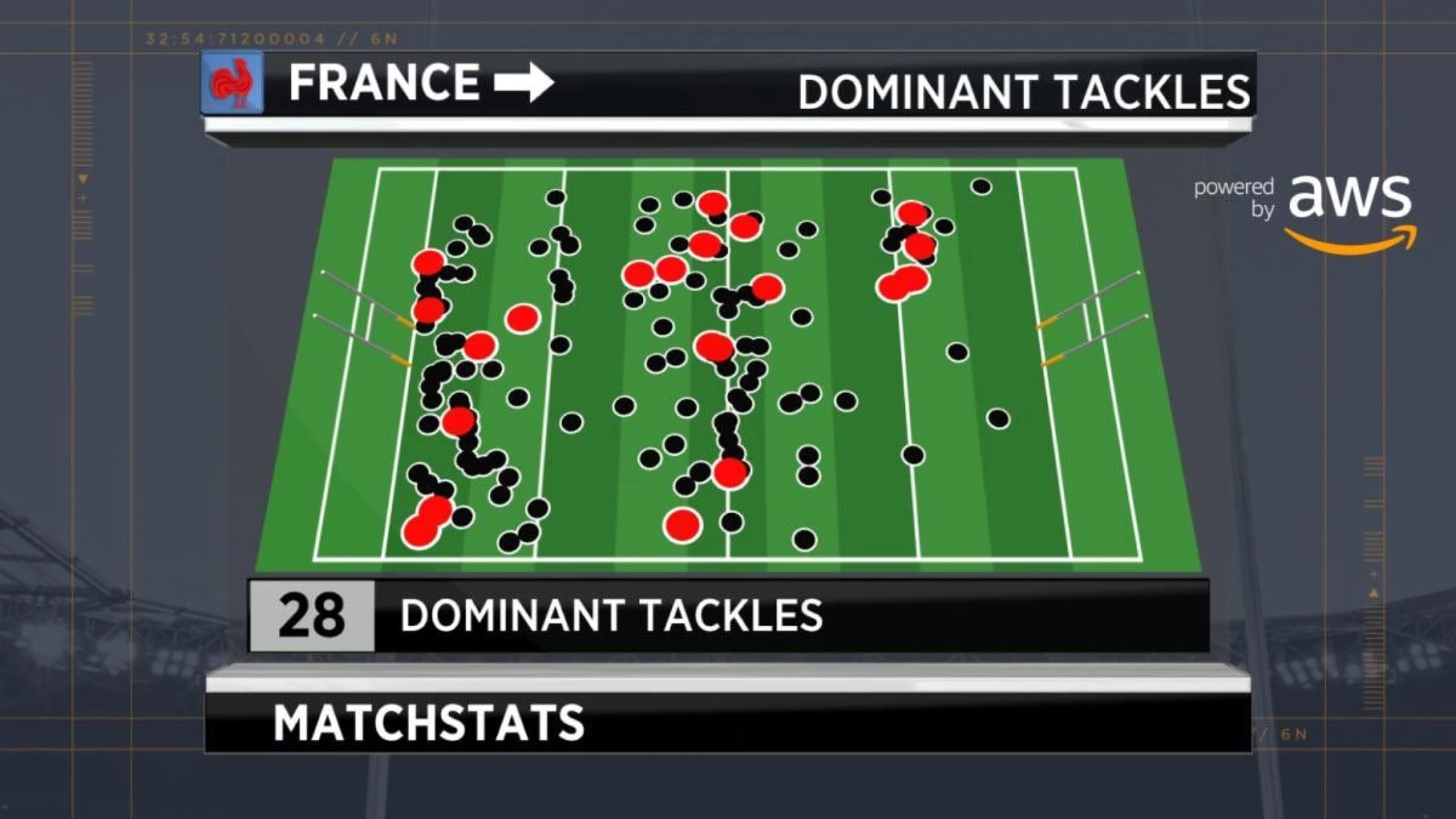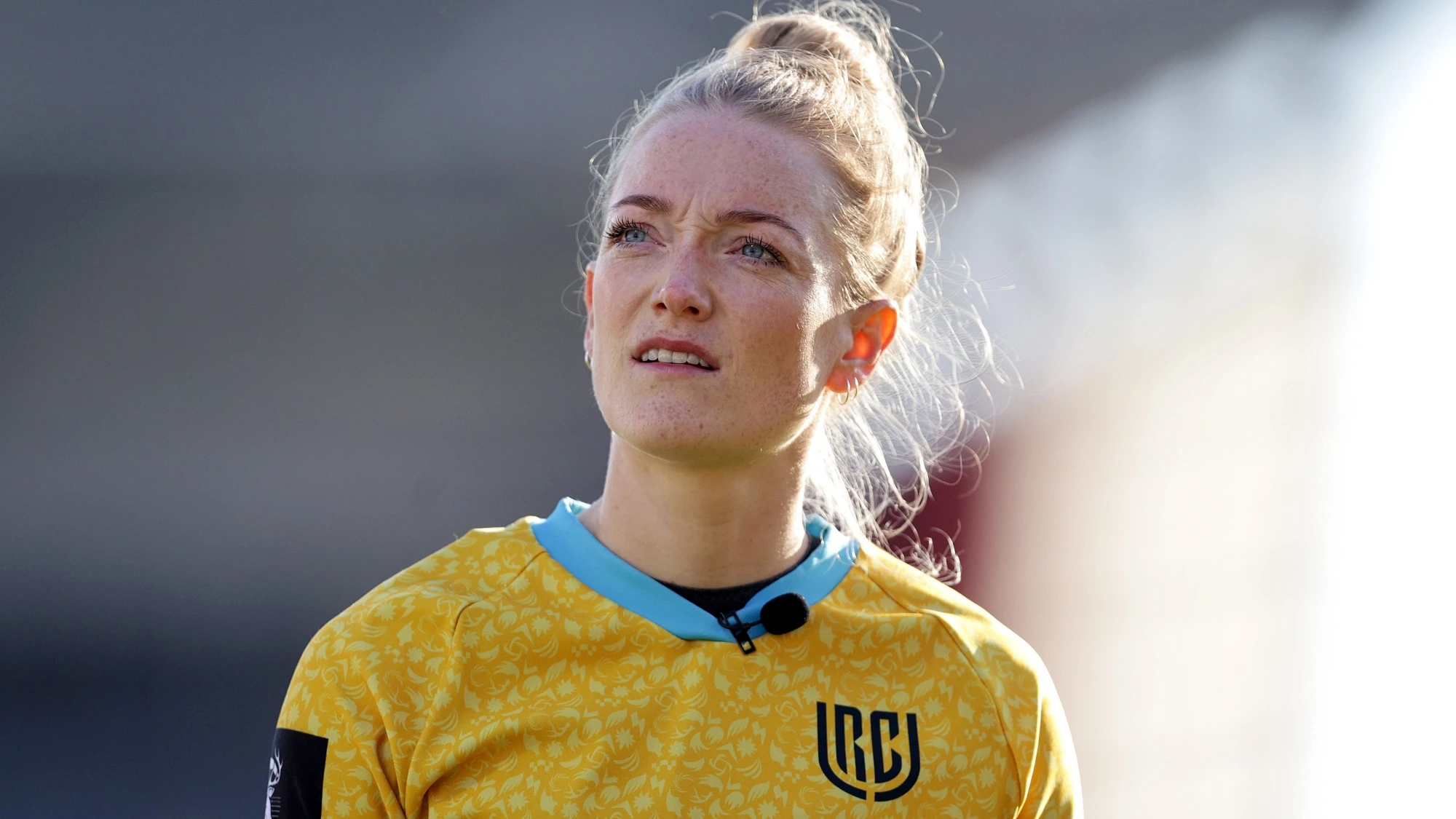And then there was one.
With England’s win over Ireland at Twickenham on Sunday, only France remain unbeaten in the 2020 Guinness Six Nations, which looks tantalisingly poised with two rounds to go.
Les Bleus impressed on their way to a first victory in Cardiff for a decade, holding on for a 27-23 victory, while earlier in the day Scotland had clinched their first win of the campaign, 17-0 in Italy.
And then on Sunday it was England who rediscovered their best form in overwhelming Ireland 24-12 at Twickenham to keep their own title hopes alive.
A look at the MatchStats Powered by AWS gives us plenty of insight into the decisive areas from the weekend’s action.
Here are five of the most notable:
FRENCH TERRITORY
France travelled to Principality Stadium having lost eight of their last nine meetings with Wales, and a decade removed from their last win in Cardiff.
Barring a 27-6 defeat in 2014, none of those losses had been by more than ten points, and the previous three had been by a combined seven points.
Against Wales’ Shaun Edwards-led defence, France would often play more rugby in their own half and finish with the more impressive attacking numbers, while failing to turn those into points.
The opposite was true on Saturday as France steered clear of playing the ball in their own territory.
This first graphic shows us that France had just 26% of their rucks in their own half, and a closer examination tells that even those were largely around the halfway line.
Against such a good jackaling team like Wales, France did not want to take any chances with possession and instead tried to play the game in Welsh territory as much as possible.
The impact of kicking specialist Vlok Cilliers was clear as Antoine Dupont, Romain Ntamack and Anthony Bouthier regularly pinned Wales back in their own territory.
And the tactic was more than just about relieving pressure. Ntamack’s early up and under from just inside his own half led to Bouthier’s opening try.
ENGLAND’S DEFENSIVE DOMINANCE
At Twickenham, England made the sort of flying starts that have become their trademark under Eddie Jones as they overpowered previously unbeaten Ireland.
In 2019, no team made as many dominant tackles as England, and that was the case on Sunday as 16% of their tackles were dominant.
Time and again, Ireland found themselves forced backwards as the likes of Courtney Lawes, Maro Itoje, Sam Underhill and Manu Tuilagi stopped carriers getting over the gain line.
What is noticeable about the graphic above is just how consistently England were able to make dominant tackles, all over the pitch.
Most often it was in the areas between halfway and each side’s 22, but England were also able to push Ireland back when they got into the English 22, as well as some key tackles right back in Ireland territory.
That physicality increased the pressure on Conor Murray and Johnny Sexton to find alternative solutions, with Ireland’s carrying game nullified.
Andy Farrell’s men actually had more of the ball and spent more time in the England 22 than vice versa, but they could not turn that into points because of England’s aggressive defence.
FRANCE’S GOAL-LINE DEFENCE
A hallmark of Wales’ great defences under Shaun Edwards was their ability to defend their line for long periods without conceding.
Most often in Cardiff, the image of them defending for ten minutes or more in their 22 against, most memorably, England and Ireland, is etched in the minds of Welsh fans.
There must have been a few wry smiles on Saturday at seeing the trend reversed as France turned the tables on Wales in two crucial passages.
Before half-time, Wales camped on the French line, turning down three kickable penalties in search of a try that would have got them back in the game.
Even with 14 men, after Grégory Alldritt’s yellow card, France were able to hold out and eventually force an error.
Then in the second half they had a second-long period defending their line, with Wales again opting for scrums instead of kicks at goal.
This time it was a huge shove from the French scrum that earned them a reprieve.
What is clear from the graphic above, is just how often France were able to put in dominant tackles close to their own line.
In an area of the pitch where teams are almost always on the back foot, France were able to keep the pressure on Wales.
The crucial point of the first half came before the break after Wales’ third scrum near the line. Antoine Dupont put the pressure on initially, first on Gareth Davies, then Dan Biggar to push Wales back to the 22.
While they did get back closer to the line, the rush defence pushed them back once more before Nick Tompkins knocked on an ambitious offload from Johnny McNicholl, allowing France to breathe and Edwards to smile, if not visibly.
SCOTTISH STEALS
If there was one area of the game that told the tale of Scotland’s 17-0 win in Rome, it was their ability to pilfer ball at the breakdown.
While Italy were held scoreless, they had moments in attack when the likes of Matteo Minozzi and Mattia Bellini made inroads into the Scotland backline, both from phase play and on counter-attacks.
The problem for the Azzurri, was that invariably those attacks would end with one of the back three of Jamie Ritchie, Hamish Watson or Magnus Bradbury turning the ball over.
This is not a new phenomenon for Scotland. Back in 2018, it was a slightly different back row that decisively won the battle on the deck in a Calcutta Cup success against England.
But even by those standards, Scotland’s 22 turnovers won were remarkable. Six of them came in their own 22.
Whether it was Bradbury getting over the ball under the shadow of his own posts, or Watson pilfering a little wider, Italy were made to pay every time a runner got isolated.
Watson’s final turnover even led to the last Scotland try, with the turnover ball quickly moved left and ending with Adam Hastings picking and sprinting away down the left touchline.
With unbeaten France heading to BT Murrayfield in Round 4, Les Bleus have been warned about the dangers of giving Scotland’s jackals a sniff.
IRELAND BALL RETENTION
While Scotland were the masters of the jackal this weekend, England showed that there are many different ways to force a turnover.
With Maro Itoje leading the charge, they were able to disrupt and slow Ireland ball all day long at Twickenham in a convincing success.
Ireland, who are traditionally so accurate on their own ball, and the opposition ball for that matter, struggled to retain possession under the pressure put on by the aforementioned dominant tackling.
The graphic above shows that nine of Ireland’s 15 turnovers conceded came in their own half. That is the sort of figure that makes it almost impossible to win a game as the opposition is able to build territory and pressure.
As well as turnovers, that pressure also led to hurried kicks out of defence, with one Conor Murray box-kick leading directly to George Ford’s opening try.
Between the turnovers and the clever kicking, England controlled the first half in particular, with the only disappointment, their failure to claim a bonus point.
However, the way they disrupted Ireland ball was vindication for Eddie Jones’ decision to start three locks, with Courtney Lawes at blindside, all of whom were able to counter-ruck and pressure Ireland rucks.
That then gave Sam Underhill and Tom Curry licence to get over the ball and either slow it down or turn it over.
Wales head to Twickenham in Round 4, and Wayne Pivac knows his team will have to be ready to withstand a barrage at the breakdown.



